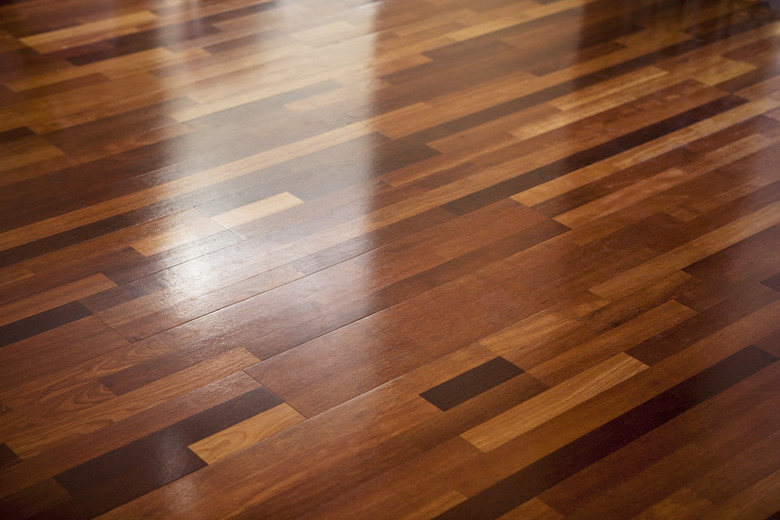How To Clean Slippery Hardwood Floors
We may receive a commission on purchases made from links.
While most people love the look of shiny, clean hardwood flooring, no one wants floors that are slippery or slick. Hardwood floors are not slippery by nature; they become slippery when too much wax or polish is applied or if inappropriate cleaning solutions are used. Luckily, cleaning slippery hardwood flooring is simple and doesn't require anything that you don't already have under your kitchen sink.
Things Needed
How to Clean Slippery Hardwood Floors
1. Clear Any Clutter
Before you get serious about cleaning your floors, you'll need to be sure there is no clutter in your way. Spend a few minutes picking up any loose toys, books, or pet toys, and be sure things like area rugs and doormats are rolled up and out of the way.
2. Sweep Up Loose Dirt and Debris
Use a broom to sweep the entire area you're hoping to clean. Start at the periphery of the room and sweep inward until you've made a pile of dirt and debris and then gently sweep it into a dustpan for disposal.
3. Create the Cleaning Solution
Create an anti-slip cleaning solution by mixing 2 parts water with 1 part vinegar in a bucket. Gently mix the vinegar and water with the end of a mop and give it a few minutes to disperse and settle before you get to work.
4. Mop Your Floors With Vinegar
Dip the mop into the vinegar cleaning solution. Wring it out until it's damp but not dripping wet to remove any excess moisture that might damage your floors. Beginning at the back of the room, mop your floors using gentle, circular motions. Vinegar does an excellent job of making floors less slippery because it cuts grease and wax buildup, both of which are primary culprits for slipperiness.
Warning
Avoid mopping your floor with a sopping wet mop. Excess water can damage hardwood floors permanently and leave you with a costly repair.
5. Let Your Floors Dry
Allow your floors to fully dry before you replace any rugs or doormats. While it likely won't take long for your floors to air-dry, you can speed up the process if necessary by opening the windows and turning on fans.
6. Repeat as Necessary
Your floors will be noticeably less slippery after the first application of the vinegar solution, but you may find that you need to repeat the process to achieve your desired level of safety. If you find that you're still slipping and sliding more than you'd like after cleaning your floors with vinegar, simply repeat the process every few days.
